
What are the Applications of a Vitrified Bond Diamond Grinding Wheel?
Struggling with grinding hard materials? Poor finishes and slow cycle times cost you money. Vitrified diamond wheels offer the precision and speed you need for these tough jobs.
Vitrified bond diamond grinding wheels are primarily used for precision grinding of hard and brittle materials. This includes tungsten carbide, ceramics, glass, PCD/PCBN cutting tools, and advanced aerospace alloys. Their rigidity and porous structure make them ideal for high-efficiency, high-precision tasks.

You now know the basics of where these wheels are used. But understanding the specific applications can truly transform your production line. Let’s explore how these powerful tools can benefit your specific industry and materials.
What are the primary applications for vitrified bond diamond grinding wheels?
Are general-purpose wheels failing your precision tasks? Inconsistent results can lead to scrapped parts and frustration. These specialized wheels are designed for high-stakes, demanding applications across various fields.
Primary applications include sharpening PCD/PCBN tools, grinding tungsten carbide, shaping advanced ceramics, and finishing semiconductor materials like silicon wafers. They excel in tasks requiring high precision, excellent surface finishes, and great form retention.

At our factory in Henan, we see these applications every day. The power of a vitrified diamond wheel is in its specific design. It combines the extreme hardness of diamond with the rigid, porous structure of a ceramic, or vitrified, bond. This allows for aggressive material removal while also providing channels for coolant to prevent heat damage. For example, a client of ours struggled with sharpening PCBN inserts. Their old wheels couldn’t hold the precise edge profile they needed. After switching to one of our RL vitrified diamond wheels, their tool life immediately improved by 30%. This is because the wheel maintained its shape perfectly throughout the process.
Here’s a breakdown of the key application areas:
Tool and Cutter Grinding
This is a huge area for these wheels. They are perfect for manufacturing and re-sharpening tools made from materials like PCD, PCBN, and tungsten carbide1. The wheel’s ability to hold its form is critical for creating sharp, accurate cutting edges.
Hard and Brittle Material Processing
Vitrified wheels make grinding materials like technical ceramics, sapphire, and optical glass much easier. These materials can easily crack from thermal stress. The porous nature of the wheel allows for excellent coolant flow2, keeping the workpiece cool and preventing damage.
Aerospace and Automotive Components
In these industries, precision is everything. The wheels are used to grind high-strength alloys and ceramic-coated parts. They ensure that components meet strict dimensional tolerances and surface finish requirements for optimal performance.
Which industries benefit most from using vitrified diamond wheels?
Does your industry demand extreme precision? Falling behind competitors on quality can be very costly. Vitrified wheels provide the performance edge needed in high-tech, demanding manufacturing sectors.
The aerospace, automotive, semiconductor, medical device, and tool manufacturing industries benefit the most. These sectors require the high precision, excellent surface finish, and thermal stability that vitrified diamond wheels provide for processing advanced materials.
![]()
We have been supplying grinding wheels to a major automotive parts manufacturer here in Henan for nearly a decade. They use our wheels for the final grinding of engine piston rings. The consistency we provide means their engines meet stricter emission standards and last longer. This is a perfect example of an industry benefiting directly from this technology. The wheel’s rigidity ensures that every single part is ground to the exact same tolerance, which is impossible with less stable grinding wheels. This level of repeatable accuracy is what modern manufacturing demands. The benefits are clear and translate directly to a better, more reliable end product.
Different industries leverage these wheels for specific, critical tasks:
| Industry | Common Component | Key Benefit Achieved |
|---|---|---|
| Aerospace | Turbine Blades, Landing Gear | Grinding tough alloys with high accuracy, no heat damage. |
| Automotive | Engine Blocks, Fuel Injectors | Achieving tight tolerances for better fuel efficiency. |
| Semiconductor | Silicon Wafers, Sapphire Substrates | Creating mirror-like finishes with minimal subsurface damage. |
| Tool Manufacturing | Carbide End Mills, PCD Inserts | Creating and sharpening complex geometries with sharp edges. |
| Medical | Surgical Instruments, Ceramic Implants | High-precision grinding of biocompatible materials3. |
What materials are best ground using vitrified bond diamond wheels?
Are you trying to grind ultra-hard materials? Using the wrong abrasive wheel will cause excessive wear, poor results, and wasted time. Vitrified diamond wheels are specifically designed to tackle the toughest materials with ease.
These wheels are best for grinding ultra-hard, brittle, and non-ferrous materials. This includes tungsten carbide, polycrystalline diamond (PCD), cubic boron nitride (PCBN), advanced ceramics, glass, sapphire, and some composite materials like carbon fiber.

It’s important to understand why these wheels work so well on these specific materials. The key is in the chemistry. Diamond is a form of carbon. When you grind iron-based materials like steel, the high heat can cause a chemical reaction between the carbon in the diamond and the iron in the steel. This breaks down the diamond abrasive very quickly. That’s why we always advise customers to use our Cubic Boron Nitride (CBN)4 wheels for ferrous metals. However, for non-ferrous hard materials, diamond is the perfect abrasive. The vitrified bond holds the diamond crystals securely, exposing sharp cutting points to the workpiece for fast and efficient grinding.
Here’s a closer look at the material groups:
Superhard Cutting Tool Materials
This includes PCD and PCBN. These are some of the hardest materials used in modern manufacturing, and only diamond is hard enough to shape them effectively.
Technical Ceramics and Glass
Materials like Alumina, Zirconia, Sapphire, and optical glass are extremely brittle. The cool cutting action of a vitrified wheel is essential to grind them without causing micro-cracks that would compromise the part’s integrity.
Hard Metals and Composites
Tungsten carbide is a staple in many industries. Vitrified diamond wheels provide the best performance for grinding and shaping it. They are also effective on modern composite materials like carbon fiber reinforced plastics (CFRP), which are very abrasive and quickly wear down conventional wheels.
When should you choose a vitrified bond over a resin or metal bond wheel?
Are you confused by the different bond types available? Choosing the wrong bond wastes time and money on inefficient processes. Knowing when to use a vitrified bond gives you a real competitive advantage.
Choose a vitrified bond for high-precision, high-efficiency grinding where form retention, aggressive cutting, and a cool grinding action are critical. It is superior to resin for rigidity and to metal for cutting speed and porosity.

A customer once insisted on using resin bond wheels5 for a high-volume carbide grinding6 job. They told me they were burning through wheels and their cycle times were too long. We sent them a sample of our RL vitrified wheel for them to test. Their wheel life tripled, and their cycle time decreased by 20%. The choice of bond makes a massive difference. Resin bonds are softer and create great finishes, but they can’t handle the pressure of aggressive, high-volume work. Metal bonds are extremely durable but cut slowly. Vitrified bonds hit the perfect balance of aggressive cutting7, long life, and precision.
Here’s a simple table to guide your decision:
| Feature | Vitrified Bond | Resin Bond | Metal Bond |
|---|---|---|---|
| Hardness/Rigidity | Very High | Medium | High |
| Porosity | High (Cool grinding) | Low | Very Low (Runs hot) |
| Grinding Speed | Fast | Medium | Slow |
| Form Holding | Excellent | Good | Excellent |
| Best For… | Precision & Speed | Finish & General Use | Durability & Cutting-Off |
In short, you should select a bond based on your primary goal. For precise, fast, automated grinding on CNC machines, vitrified is almost always the best answer.
Conclusion
Vitrified bond diamond wheels provide unmatched precision for hard materials. Selecting the right wheel elevates your production, improves quality, and reduces costs for demanding industrial applications.
-
Discover the properties and uses of tungsten carbide in various industries. ↩
-
Learn how proper coolant flow can enhance grinding performance and tool life. ↩
-
Discover the importance of biocompatible materials in medical device manufacturing. ↩
-
Explore the properties and applications of CBN in grinding ferrous materials. ↩
-
Discover the applications and limitations of resin bond wheels in grinding. ↩
-
Explore the complexities and solutions for high-volume carbide grinding processes. ↩
-
Learn about aggressive cutting techniques and their impact on productivity. ↩
Written by
leeon
You may also be interested in:
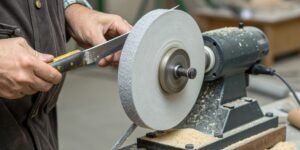
How to use a hard felt bench grinding wheel on knives?
Getting a razor-sharp, polished edge on a knife can be frustrating and slow. A dull knife is dangerous, and using the wrong tool can easily
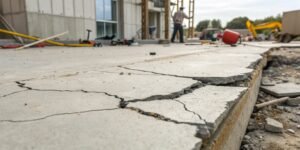
What are grinding cracks and how do you stop them?
Are tiny cracks appearing on your ground surfaces? This problem leads to part failure, wasting time and money. You can solve it by understanding the
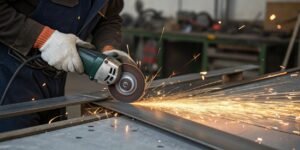
What does an angle grinder do that other tools can't?
Struggling with tools for multiple tasks? Carrying a heavy toolbox is inefficient. An angle grinder replaces many tools, saving you time and effort on the
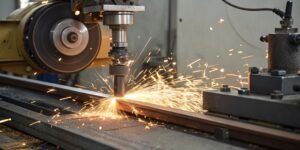
How to reduce the cycle time in a grinding machine?
Is your grinding process a major bottleneck? Slow cycle times hurt your bottom line and delay deliveries. You can speed up production by optimizing key

Do you regularly sharpen your chisels? If so, how?
A dull chisel ruins wood and causes frustration. This wastes time and expensive materials. Learning to sharpen correctly is the simple, game-changing solution you need
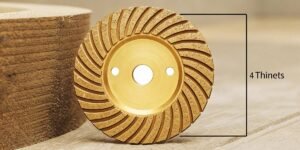
How is a grinding wheel specified?
Confused by the codes on a grinding wheel? Making the wrong choice costs money and ruins parts. Let me show you how to read them
